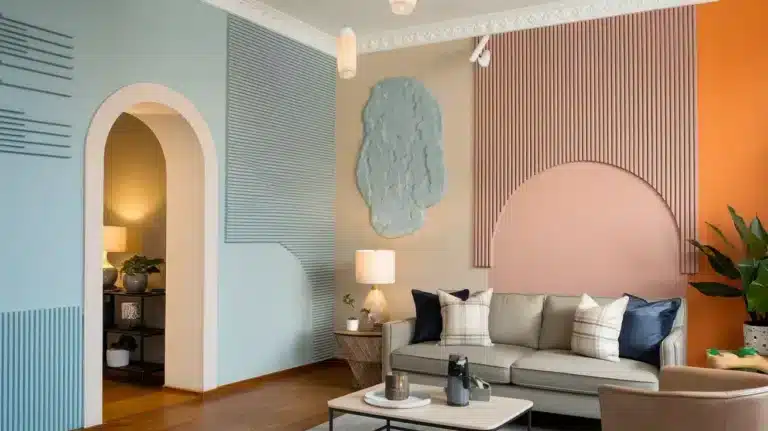If you’re someone who loves experimenting with colors and textures to refresh your home, then this guide is perfect for you. A textured wall can completely transform a room, especially if you’re planning a home makeover. It’s not just about the look, it’s practical, too! In this guide, I’ll walk you through some of the types of textured wall paint. Trust me, you’re going to love how they turn out. So, let’s dive in!
Types of Textured Wall Paint
There are so many types of textured walls, and each one tells a different story. Some create a subtle backdrop for your furniture, while others make the wall itself the star of the show.
Sand Textured Paint
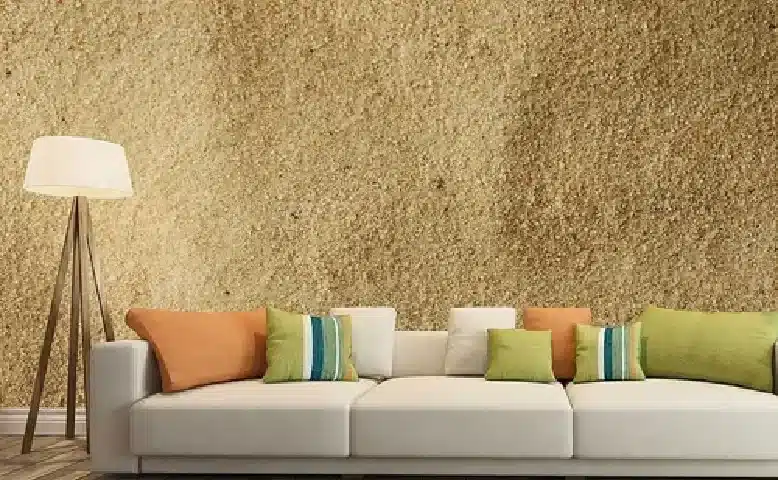
Credit: fantasiapainting.net
This one’s a favorite for good reason. Sand-textured paint has tiny grains mixed in, creating a fine, grainy finish. The result feels warm, organic, and perfect for cozy spaces.
What’s special?
- Adds a natural, matte texture
- Hides small imperfections beautifully
- Great for textured wall paint interiors
- Perfect if you love a soft, rustic paint style
Knockdown Texture
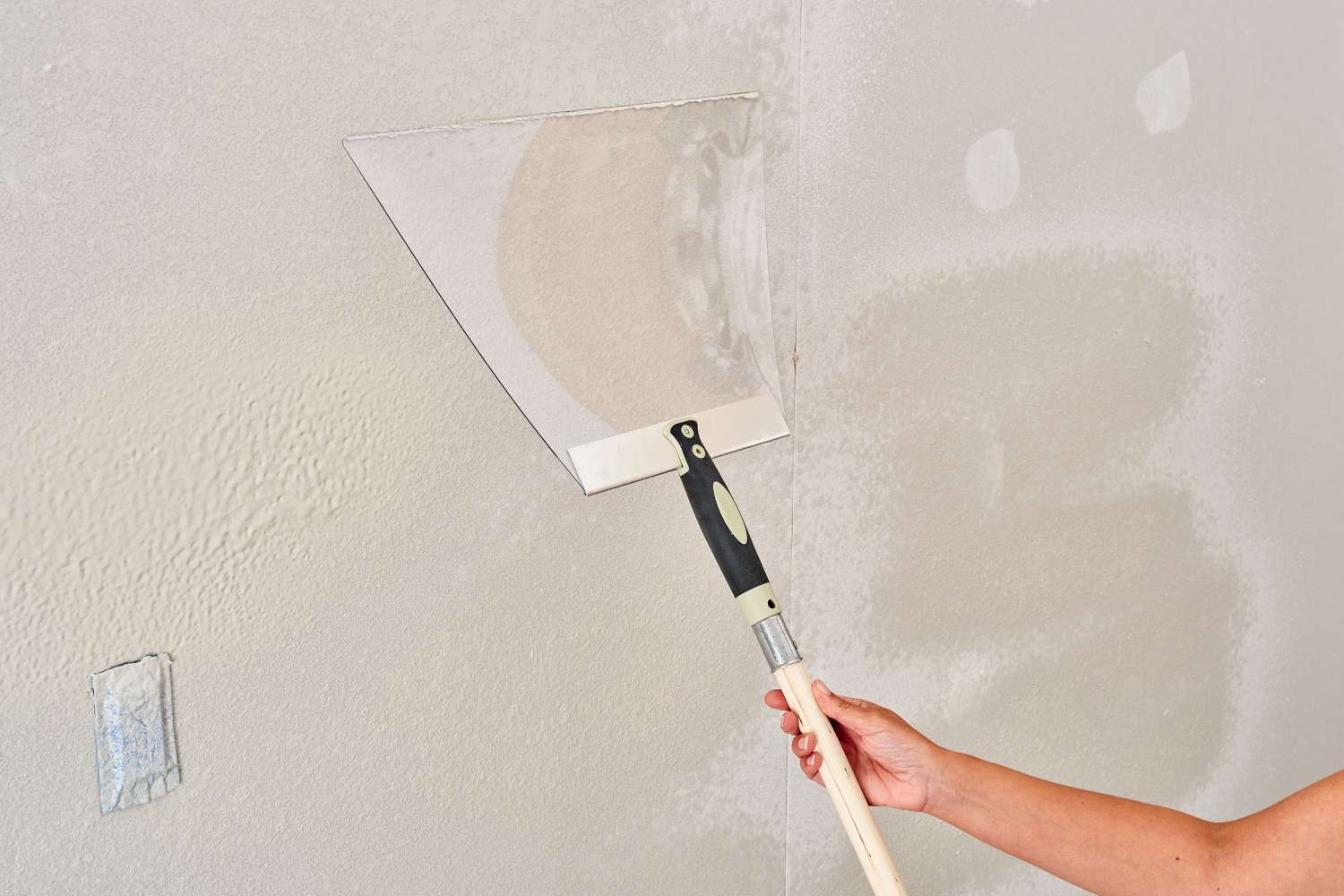
Credit: thespruce.com
The knockdown look is modern, stylish, and always popular. It’s created by applying a raised texture and then flattening it slightly, leaving a subtle, irregular pattern.
What’s special?
- Great for large walls and different ceiling textures
- Adds depth without feeling rough
- Excellent at hiding wall flaws
- Works well with textured color paint palettes
Popcorn Texture
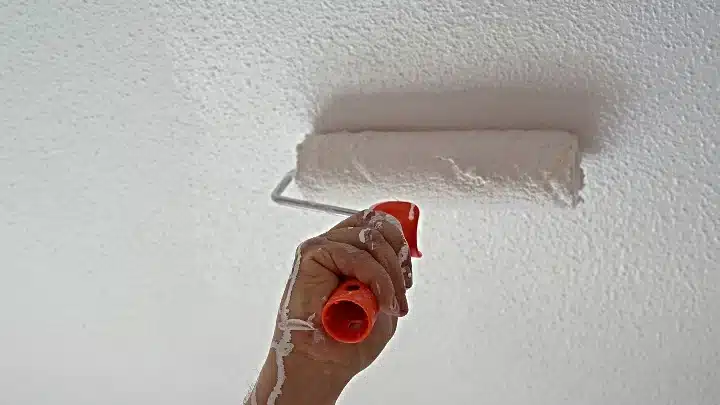
Credit: restore.tchabitat.org
A blast from the past! Popcorn texture, also known as acoustic texture, features raised bumps that resemble popcorn. While once used mostly on ceilings, some designers now use it for small wall accents. It’s a great way to add some fun to your walls, and it even helps with soundproofing. If you love creative textures like this, you might also enjoy exploring puffy paint, another playful way to bring a unique look to your space.
What’s special?
- Excellent for textured wall covering paint projects
- Adds soundproofing benefits
- Ideal for creative or retro-inspired interiors
- Fun option for playful textured painting ideas
Orange Peel Texture
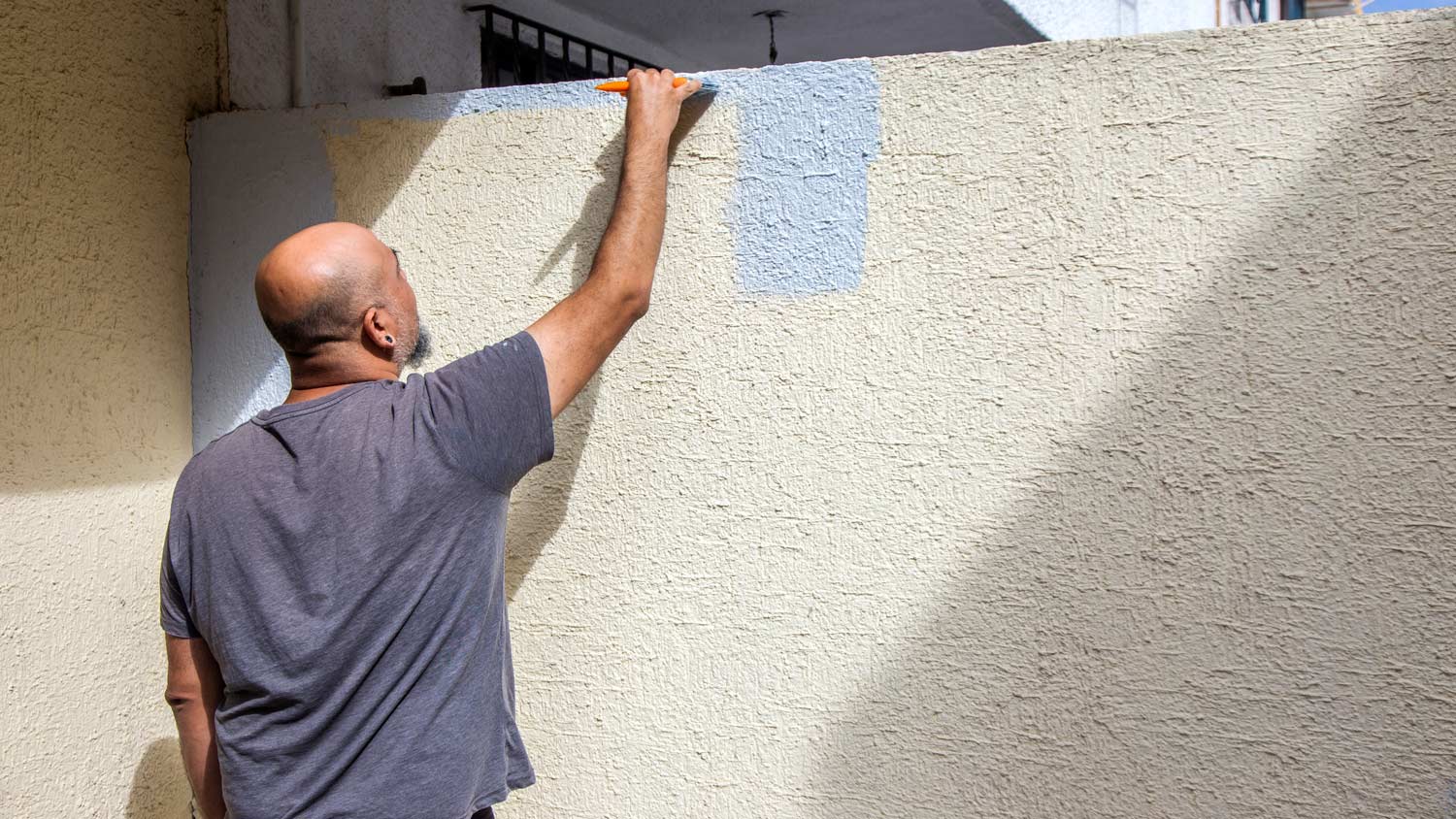
Credit: angi.com
Smooth but dimpled, orange peel texture mimics, you guessed it, the skin of an orange. It’s subtle and works in almost any room.
What’s special?
- Soft, clean, and timeless finish
- Ideal for textured wall paint in bedrooms
- Easy to clean and maintain
- Perfect for DIYers using textured paint rollers
Slap Brush Texture
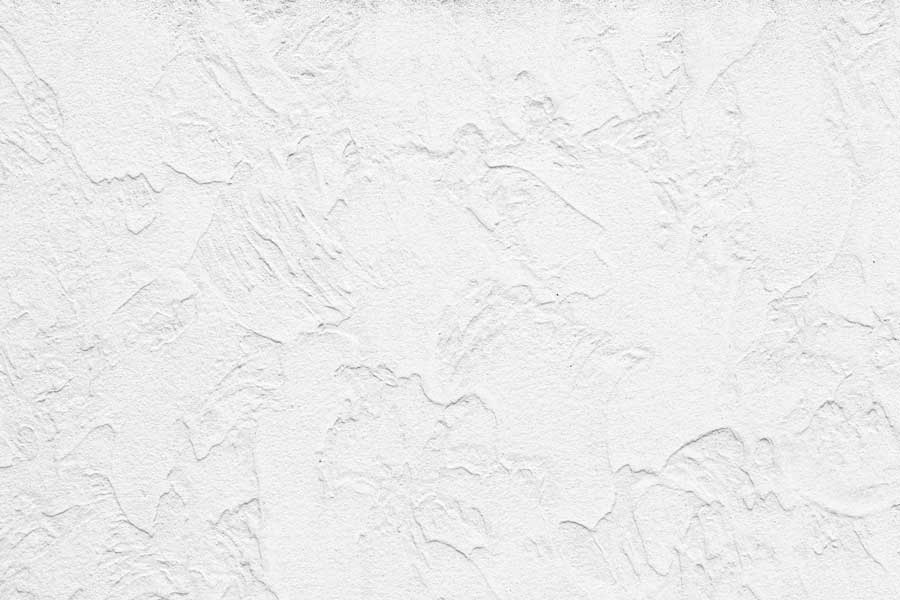
Credit: primecustombuilders.com
This one’s fun to create and looks amazing. A slap brush or textured wall paint roller is used to make random fan-like patterns while the paint is still wet. The result is bold and unique.
What’s special?
- Artistic, handcrafted appeal
- Each wall looks completely different
- Works well for textured wall paint in interior designs
- Adds personality to modern or bohemian spaces
Comb Texture
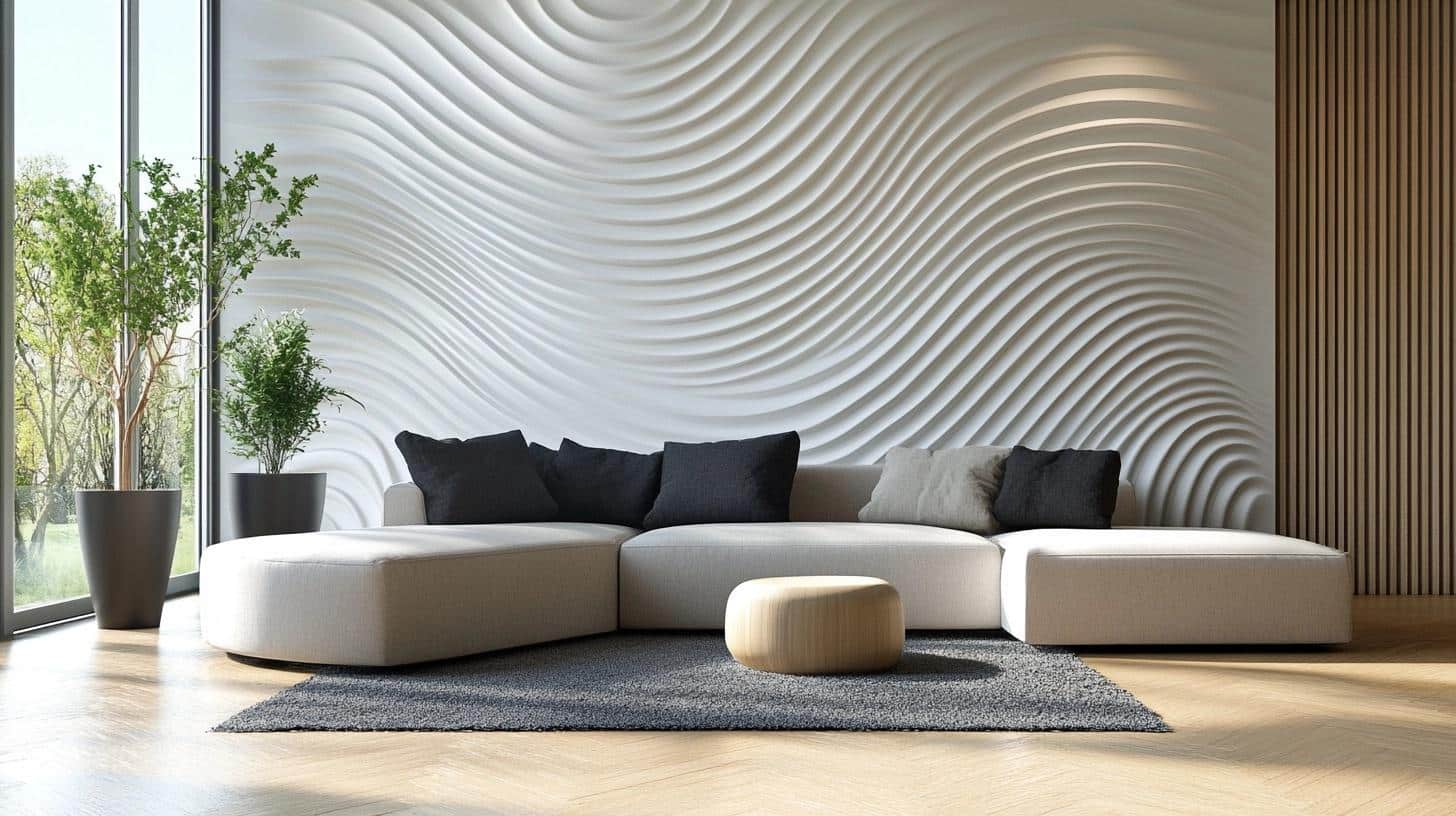
Credit: thepaintedhinge.com
If you love patterns and lines, this one’s a stunner. Using a toothed trowel, you can create wave-like or geometric effects for a neat and modern vibe.
What’s special?
- Stylish and artistic look
- Perfect for textured wall paint styles
- Works well in living rooms or accent walls
- Great option for textured wall paint design ideas
Venetian Plaster
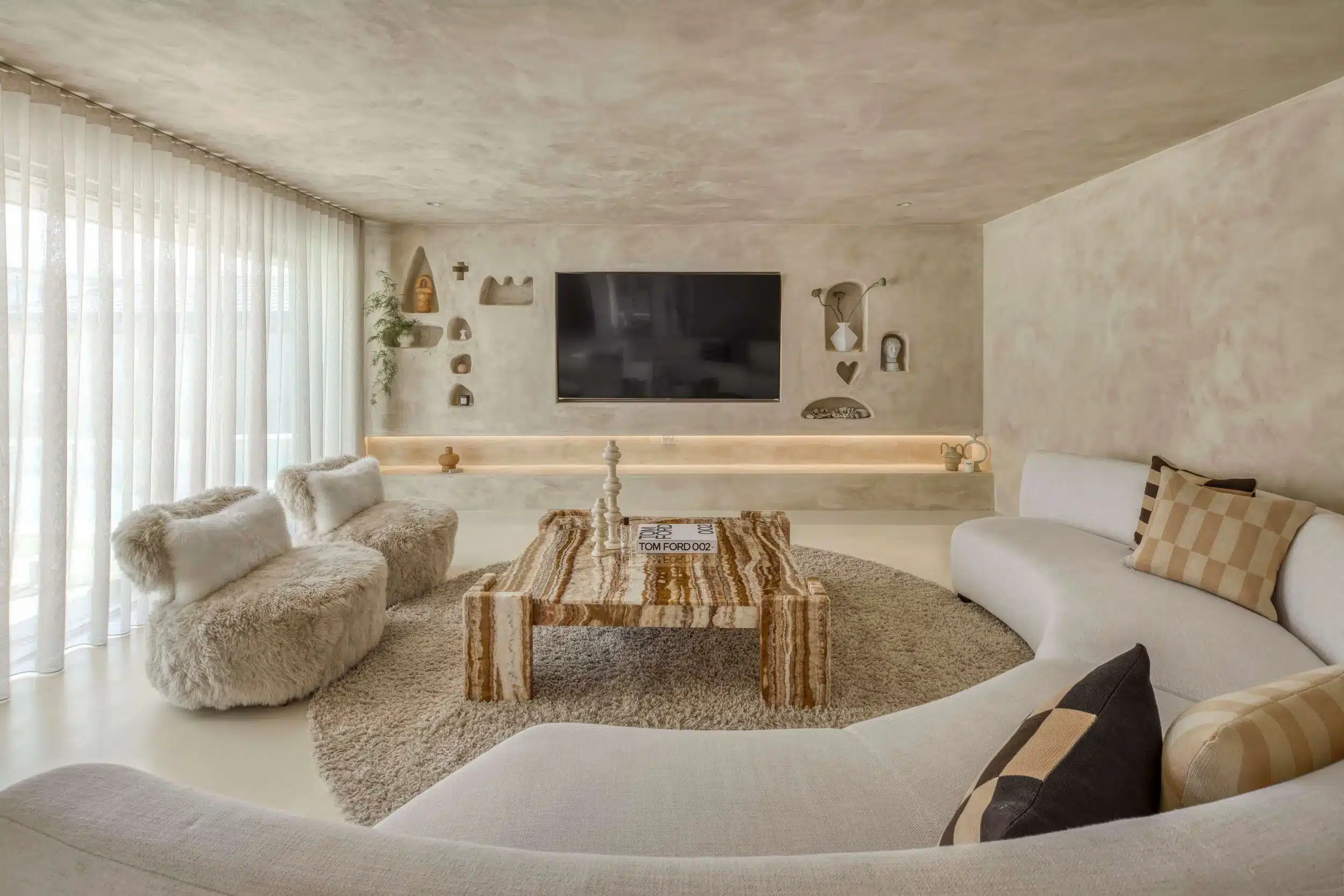
Credit: zephyrandstone.com.au
This luxurious finish gives your walls a marble-like sheen that reflects light beautifully. It’s timeless and elegant, perfect for formal spaces.
What’s special?
- Creates a polished, glossy look
- Adds depth and light reflection
- Excellent for high-end textured wall paint design
- Long-lasting and durable
Stucco Texture
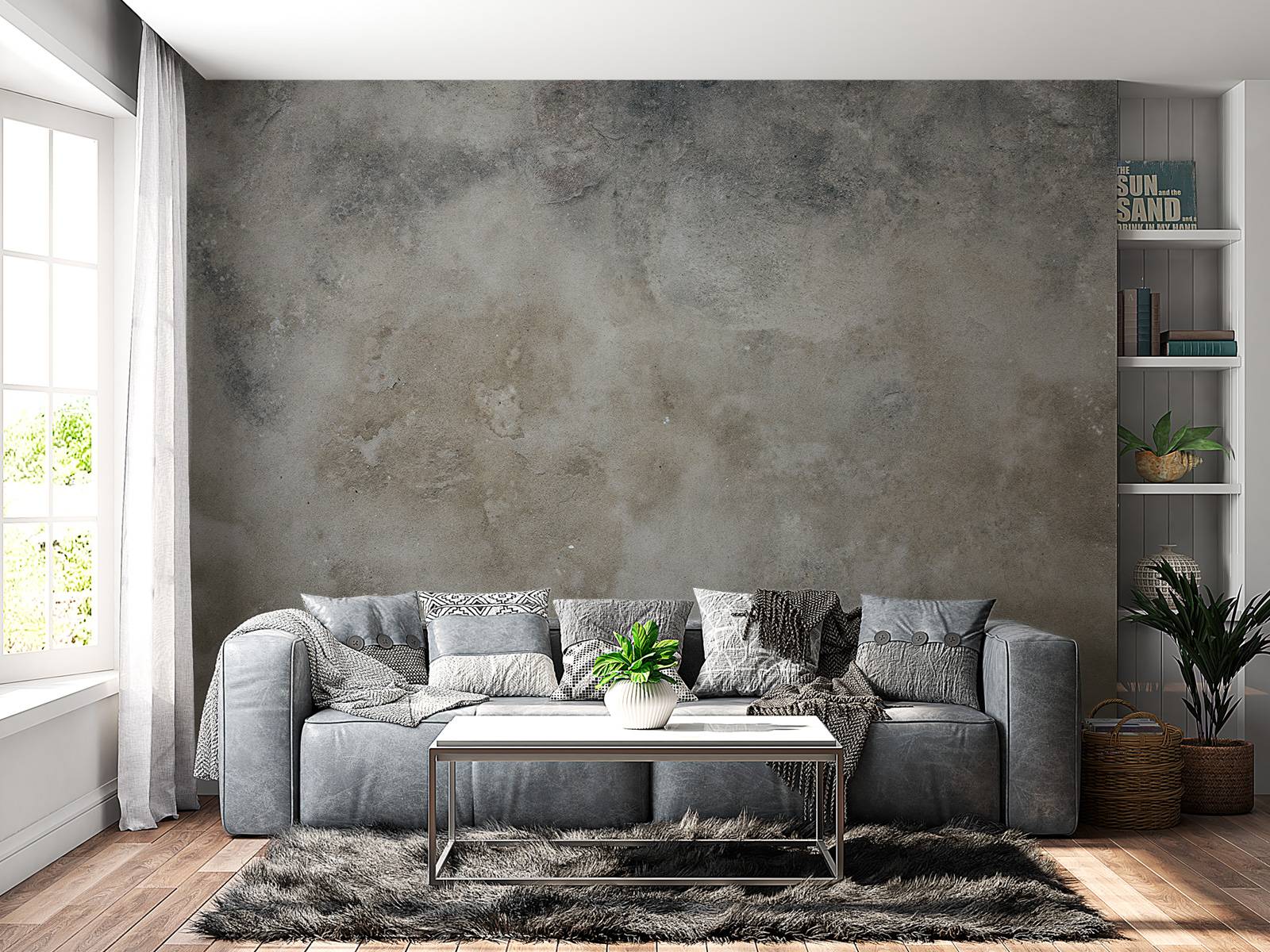
Credit: wallart.com
Stucco texture brings a classic, Mediterranean look to your walls. It’s thicker and more tactile, offering a lovely earthy charm.
What’s special?
- Great for both indoor and outdoor textured wall paint
- Weather-resistant and durable
- Adds rustic warmth to any space
- Complements dark or abstract texture backgrounds beautifully
Cement-Based Texture
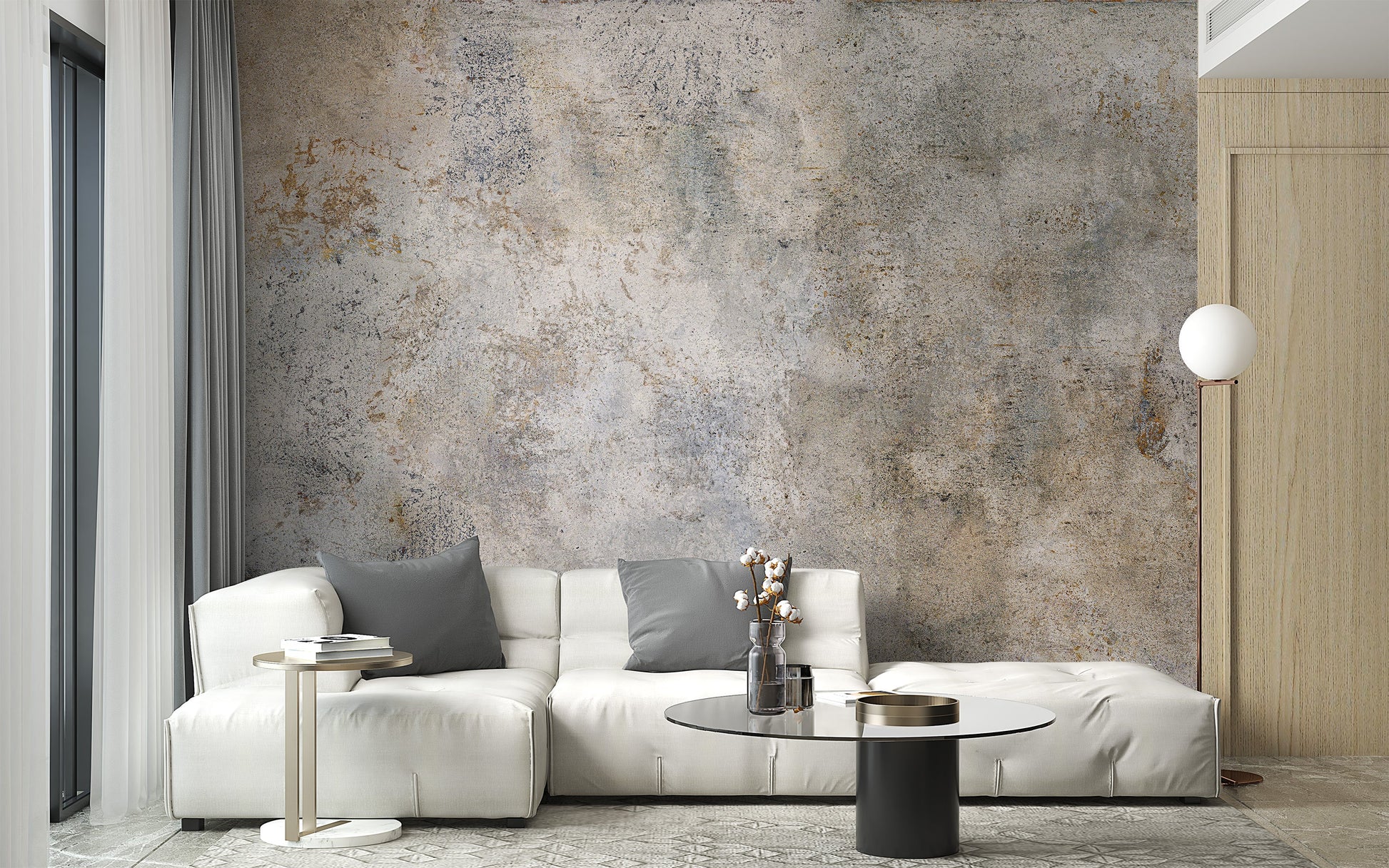
Credit: giffywalls.in
Love that cool, industrial vibe? Cement textures mimic concrete, creating a sleek, modern look. It pairs perfectly with metal or wood finishes.
What’s special?
- Durable and low-maintenance
- Ideal for lofts or modern apartments
- Works great with dark or black paint seamless texture themes
- Gives a chic, urban edge to your space
How to Choose the Right Textured Paint
Choosing between all these types of wall texture options can feel overwhelming. But don’t worry; it’s all about balance, lighting, and personal style.
Consider the Room’s Purpose
- Bedrooms: Use cozy textures like sand or orange peel for calm, soothing vibes.
- Living rooms: Go bold with Venetian plaster or stucco for elegance.
- Feature walls: Try slap brush or comb patterns for statement looks.
Look at Lighting
Textures react differently to light. Sunlight or warm lighting enhances patterns, while low light tones them down. If you have dim rooms, softer textures and lighter colors will feel more open.
Match It to Your Style
If you prefer a minimalist paint style, go with smooth or cement finishes. But, if you love artistic, expressive interiors, choose textured finishes that show movement and form, like slap brush or Venetian plaster.
Know Your Budget
Some textures are affordable, while others, like Venetian plaster, can be more premium. If you’re curious, check texture wall paint designs price guides before deciding.
The Purpose of Textured Paint
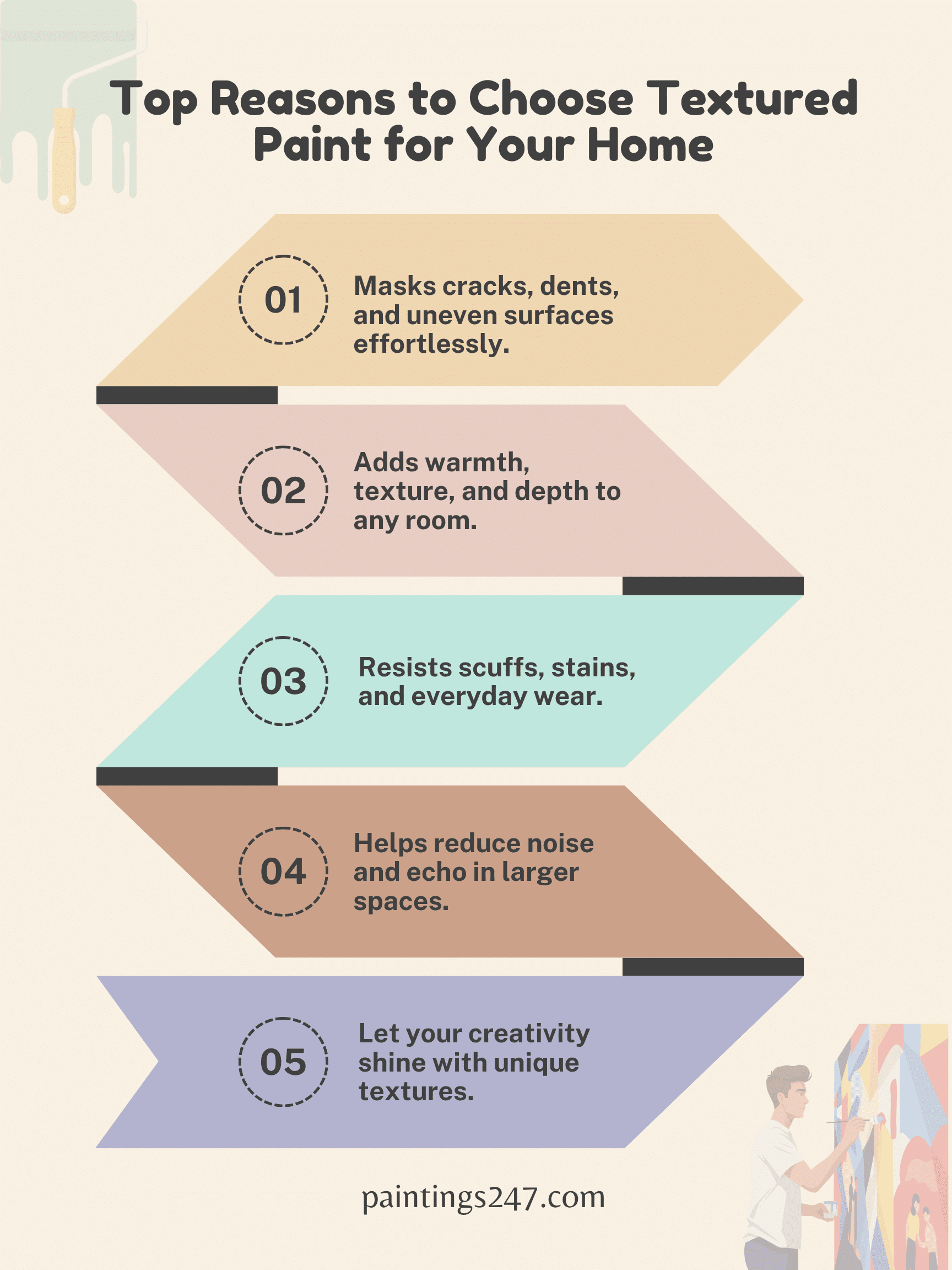
Textured paint isn’t just about making walls pretty. It has real, practical benefits too.
Covers Flaws
Textured finishes hide wall imperfections like cracks and dents. You get beautiful walls without needing major repairs.
Adds Warmth and Depth
Flat paint can look flat, literally! Texture adds movement, light play, and warmth, creating cozy, lived-in spaces.
Long-Lasting Finish
Most textured wall paint styles are durable and easy to clean. They resist scuffs and hold up well over time.
Improves Acoustics
Certain textures, especially stucco and popcorn, soften sound, reducing echo in large rooms.
Creative Expression
From soft, abstract, textured backgrounds to bold, textured wall paint designs, textured painting lets you express your personality. You can layer, blend colors, or create your own unique textured painting ideas.
How to Apply Textured Paint
Ready to give it a try? Here’s how to apply textured wall paint like a pro.
Prep the Walls
Start clean. Wipe away dust and dirt, fill cracks, and sand uneven areas. A clean, even surface makes a huge difference.
Apply a Primer
A primer helps your textured wall covering paint stick better and stay even. Don’t skip this step, it’s worth it.
Pick the Right Tools
- Use textured paint rollers for sand and orange peel textures.
- Try a brush or trowel for Venetian plaster or comb styles.
- A sprayer works best for popcorn or spray sand textures.
Work in Sections
Textured paint dries faster than flat paint, so work slowly and section by section. Shape or brush patterns while the paint is still wet.
Let It Dry and Seal
Allow your wall to dry completely before applying another coat or sealer. Some textured wall paint interior finishes benefit from a clear topcoat for shine and protection.
Final Words
In a nutshell, we have discussed different types of textured wall paint. Now, we know that textured paint is more than a style trend; it’s a creative upgrade for your home. It transforms flat, dull surfaces into walls with depth, warmth, and charm. So go ahead, grab your roller, explore new textured painting ideas, and let your walls do the talking!
Frequently Asked Questions
Let’s clear up some questions about types of textured wall paint.
Can I use textured paint on old walls?
Yes! Textured paint is perfect for older walls; it hides cracks and uneven spots beautifully.
Is textured paint expensive?
Not necessarily. You can find affordable textured wall paint designs that look high-end. Prices depend on the material and finish.
Can I paint over textured walls later?
You can, but it may take a bit of sanding and multiple coats for a smooth surface.
Which texture suits small rooms best?
Lighter textures like sand or orange peel make small spaces feel open and airy.
How long does textured paint last?
With good prep and quality materials, textured wall paint interiors can last 5–10 years easily.

